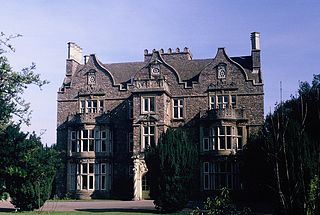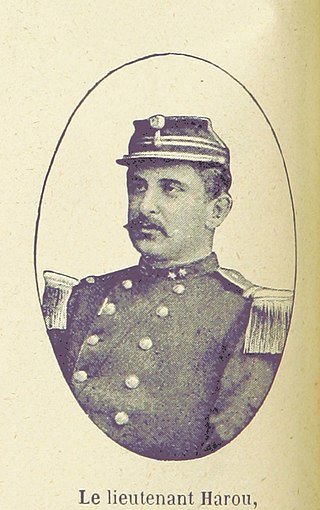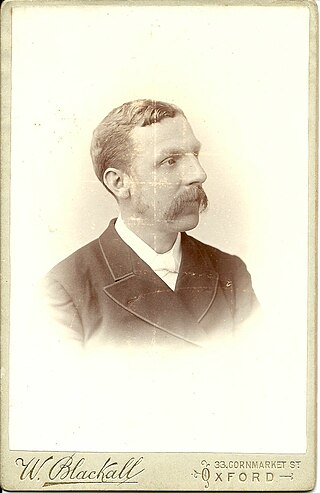History
Rawdon College replaced the Horton Academy of Little Horton, Bradford, which the Yorkshire and Lancashire Baptists had founded in 1804, using an adapted weaving shed as its premises. Horton and Rawdon were both run by the Northern Baptist Education Society. Rawdon College was opened on 4 September 1859 in a ceremony attended by 700 people. The president of the meeting was Sir Francis Crossley, of Halifax. Sir Titus Salt, the industrialist who created Saltaire, was present.
The purpose of the college was to identify and train evangelistic preachers. At first students were prepared to take degrees at the University of London. James Aeworth was head of Horton and then Rawdon College from 1836 to 1853. William Medley taught at Rawdon from 1869 to 1908, and was the most significant philosopher at the college. He was the author of Christ the Truth. An Essay towards the Organization of Christian Thinking (1900).
Rawdon was affiliated to the University of Leeds in 1904. During the First World War (1914–1918) Midland Baptist College was closed and Rawdon acquired most of its assets. At the start of the Second World War (1939–1945) the college had 30 men, but there were only four in 1944, so the college closed until 1946. In 1961 Rawdon was merged with Manchester College to create the new Northern Baptist College, which was based in the Manchester premises.
Between 1964 and 1975 the college was used to house students of the Trinity and All Saints' Teacher Training College. In 1980 the college building was converted into 18 domestic residences. The site, containing other buildings, is known as Larchwood. In September 2010 a blue plaque was erected on Woodlands Drive to commemorate the former college.

William Butterfield was a British Gothic Revival architect and associated with the Oxford Movement. He is noted for his use of polychromy.

Sir George Gilbert Scott, largely known as Sir Gilbert Scott, was a prolific English Gothic Revival architect, chiefly associated with the design, building and renovation of churches and cathedrals, although he started his career as a leading designer of workhouses. Over 800 buildings were designed or altered by him.

Regent's Park College is a permanent private hall of the University of Oxford, situated in central Oxford, just off St Giles', England, United Kingdom.

Guiseley is a town in metropolitan borough of the City of Leeds, West Yorkshire, England. Historically part of the West Riding of Yorkshire, it is situated south of Otley and Menston and is now a north-western suburb of Leeds.
Baptists Together, formally the Baptist Union of Great Britain, is a Baptist Christian denomination in England and Wales. It is affiliated with the Baptist World Alliance and Churches Together in England. The headquarters is in Didcot.

Yeadon is a town within the metropolitan borough of the City of Leeds, West Yorkshire, England.

Trinity College, Bristol is an evangelical Anglican theological college located in Stoke Bishop, Bristol, England. It offers a range of full-time and part-time taught undergraduate and postgraduate courses which are validated by the University of Durham through the Common Awards Scheme, though the college sets its own curriculum. Many of its students are training for ordination in the Church of England; and hence there is a strong vocational aspect to the courses it provides. It also has students of other Christian denominations, as well as students who are intending to serve within various forms of lay ministry. The college also has a significant number of students studying for research degrees at masters and doctoral levels. All of Trinity's postgraduate research courses are validated by the University of Aberdeen.

Westbury is a market town and civil parish in west Wiltshire, England. The town lies below the northwestern edge of Salisbury Plain, about 4 miles (6 km) south of Trowbridge and a similar distance north of Warminster.

Rawdon is a village and civil parish in the metropolitan borough of the City of Leeds, West Yorkshire, England. It sits on the River Aire and on the A65 south of Yeadon.

The CICM Missionaries, officially known as the Congregation of the Immaculate Heart of Mary and often abbreviated as C.I.C.M, is a Catholic clerical religious congregation of Pontifical Right for men established in 1862 by the Belgian Catholic priest Theophile Verbist (1823–1868). Its members add the post-nominal letters C.I.C.M. to their names to indicate membership in the congregation.

Romanesque Revival is a style of building employed beginning in the mid-19th century inspired by the 11th- and 12th-century Romanesque architecture. Unlike the historic Romanesque style, Romanesque Revival buildings tended to feature more simplified arches and windows than their historic counterparts.

Monkton Combe School is a public school, located in the village of Monkton Combe near Bath in Somerset, England.

Andhra Christian Theological College (ACTC) is a seminary in Telangana which was founded in 1964. It is affiliated with India's first university, the Senate of Serampore College (University), and has degree-granting authority under a Danish charter ratified by the government of West Bengal. ACTC is on the Hussain Sagar canal (north) in Gandhinagar, Hyderabad, about 4 kilometres (2.5 mi) from the Secunderabad Junction railway station.

Chapmanslade is a village and civil parish in the county of Wiltshire, in the southwest of England. The parish is on the county border with Somerset and includes the hamlets of Huntenhull Green, Short Street and Thoulstone. The village lies about 3.5 miles (6 km) from each of three towns: southwest of Westbury, northwest of Warminster, and east of Frome.

Benton Park School is a coeducational secondary school and sixth form located in Rawdon, West Yorkshire, England. Formerly a technology college, it has over 1,400 students.

St Boniface College, Warminster, formerly St Boniface Missionary College, was an Anglican educational institution in the Wiltshire town of Warminster, England during the last third of the 19th century and the first two-thirds of the 20th.

Manyanga was a staging post on the route from the coast to Léopoldville during the days of the Congo Free State. It was at the upper end of a navigable reach of the Congo River from Isangila, further downstream to the west. Above Manyanga goods had to be carried by land round the falls and rapids to Stanley Pool.

Victor Eugène Jules Harou was a Belgian soldier and explorer.

H. E. Crudgington (1852–1931); Henry Edmund Crudgington, was a Baptist missionary from Ireland who was active in the Congo region before the Congo Free State was established.

Thomas James Comber was a Baptist missionary from England who was active in the Congo region before the Congo Free State was established.



















